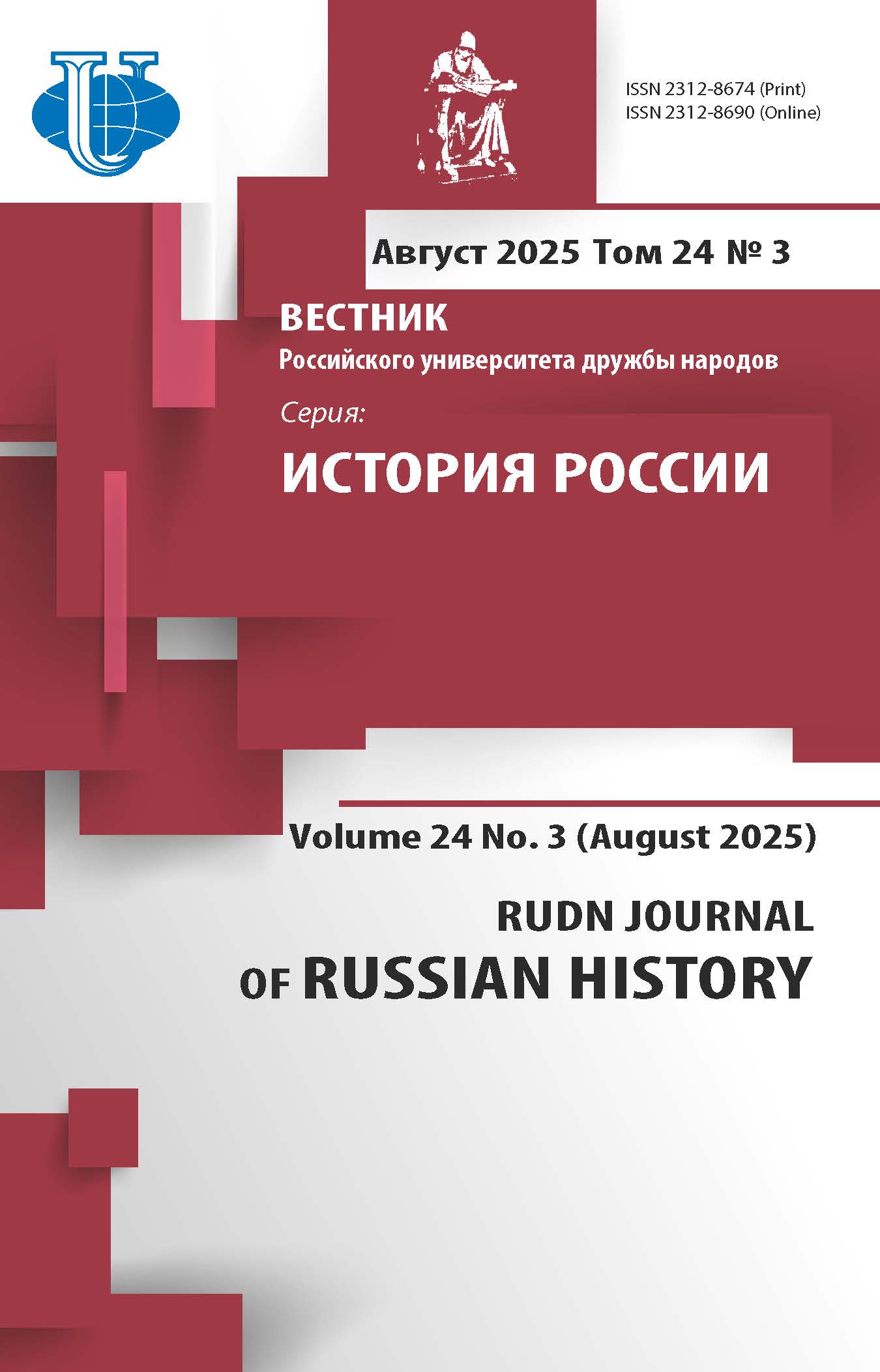«ЗЕМСКОЕ ГОСУДАРЕВО ДЕЛО»: ЗЕМСКАЯ ЕДИНИЦА ГОСУДАРСТВЕННОЙ СИСТЕМЫ УПРАВЛЕНИЯ
- Авторы: Азаматова Г.Б.1
-
Учреждения:
- Уфимский научный центр Российской академии наук
- Выпуск: № 4 (2014)
- Страницы: 16-24
- Раздел: СТАТЬИ
- URL: https://journals.rudn.ru/russian-history/article/view/4248
- ID: 4248
Цитировать
Полный текст
Аннотация
В статье анализируется взаимосвязь земских учреждений с государственным управлением, отдельные аспекты земской деятельности рассматриваются исходя из реформаторских задач правительства. Освещается роль земства в процессе создания мировой юстиции, системы начального образования и оценочной реформы. Автор делает вывод о том, что земские учреждения были составной частью административной системы управления и играли ключевую роль в осуществлении реформаторских программ правительства во второй половине ХIХ - начале ХХ в.
Об авторах
Гульназ Булатовна Азаматова
Уфимский научный центр Российской академии наук
Email: gulnaz.azamatova@yandex.ru
Отдел истории и истории культуры Башкортостана, Институт истории, языка и литературы
Список литературы
- Земское самоуправление в России, 1864-1918: в 2 кн. / отв. ред. Н.Г. Королева. - М., 2005.
- Земская идея в истории социально-политической мысли России. Антология. В 2 т. / Под ред. А.Ю. Шутова. Подгот. текстов и коммент. А.В. и А.И. Топычкановы, С.Ю. Шокарев. - М., 2014.
- Литвак Б.Г. Переворот 1861 года в России: почему не реализовалась реформаторская альтернатива. - М.,1991. - С. 242.
- Захарова Л.Г. Великие реформы 1860-1870-х годов: поворотный пункт российской истории? // Отечественная история. - 2005. - № 4. - С. 154.
- Черникова Н.В. Государственное реформирование в России во второй половине ХIХ - начале ХХ вв.: взгляд из столичного кабинета и из провинции // Вестник Российского университета дружбы народов. Серия «История России». - 2007. - № 1. - С. 48-58.
- Миронов Б.Н. Развитие гражданского общества в России в ХIХ - начале ХХ века // Общественные науки и современность. - 2009. - № 1. - С. 112.
- Материалы по преобразованию местного управления в губерниях. - СПб., 1883. Часть 2. - С. 208.
- Абдрахманов А.Ф., Хакимов С.Х. Государственная власть и управление краем во второй половине ХIХ - начале ХХ века. Судебные и правоохранительные органы // История Башкортостана во второй половине ХIХ - начале ХХ века. В 2 т. / отв. ред. И.М. Гвоздикова, М.И. Роднов. - Уфа, 2007. - Т. 1. - С. 126.
- Горская Н.И. Земство и мировой суд в России: законодательство и практика 60-80-х гг. ХIХ в. - М., Смоленск. - 2009. - С. 107.
- Центральный исторический архив Республики Башкортостан (ЦИА РБ). - Ф. И-113. - Оп. 1. - Д. 649. - Л. 132-133, 154-155.
- Пирумова Н.М. Земская интеллигенция и ее роль в общественной борьбе до начала ХХ в. - М.,1986. - С. 132-133.
- ЦИА РБ. - Ф. 132. - Оп. 1. - Д. 656. - Л. 84-85.
- Демин И.Ю., Шутов А.Ю. Об историческом опыте и традициях русского земства // Земская идея в истории социально-политической мысли России. - Т. 1. - С. 45.
- ЦИА РБ. - Ф. 132. - Оп. 1. - Д. 656. - Л. 112-117.
- Российский государственный исторический архив (РГИА) - Ф. 573. - Оп. 16. - Д. 21063. - Л. 17.
- Королева Н.Г. Финансовое обеспечение земских программ в 1907-1914 годах // Земское самоуправление в России. 1864-1918: в 2-х кн / отв. ред. Н.Г. Королева. Кн. 2. - М., 2005. - С. 118.
Дополнительные файлы















